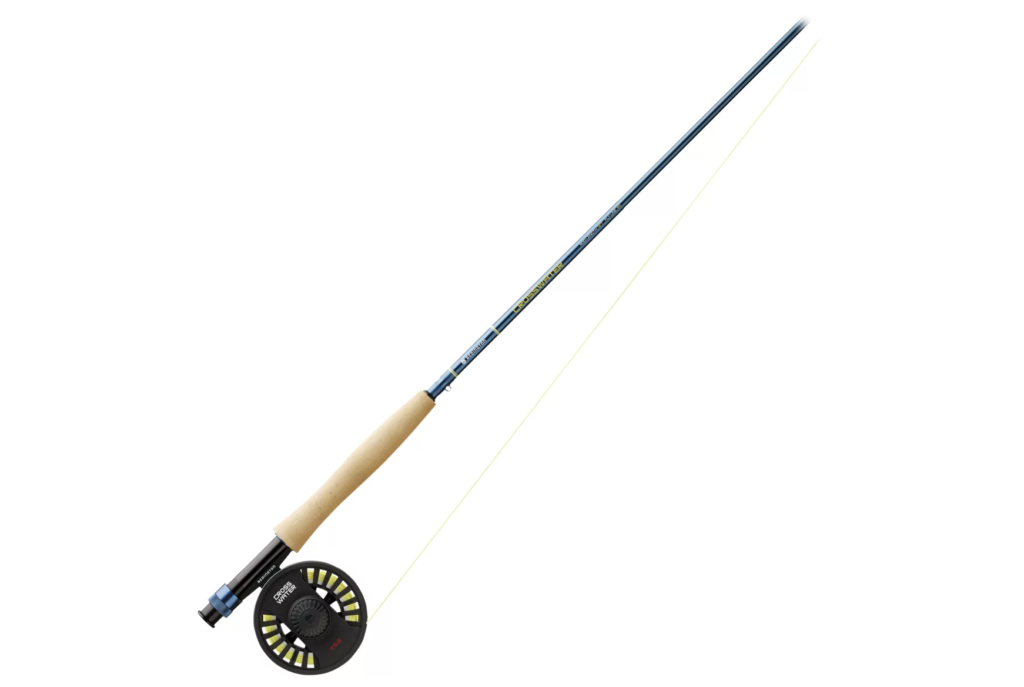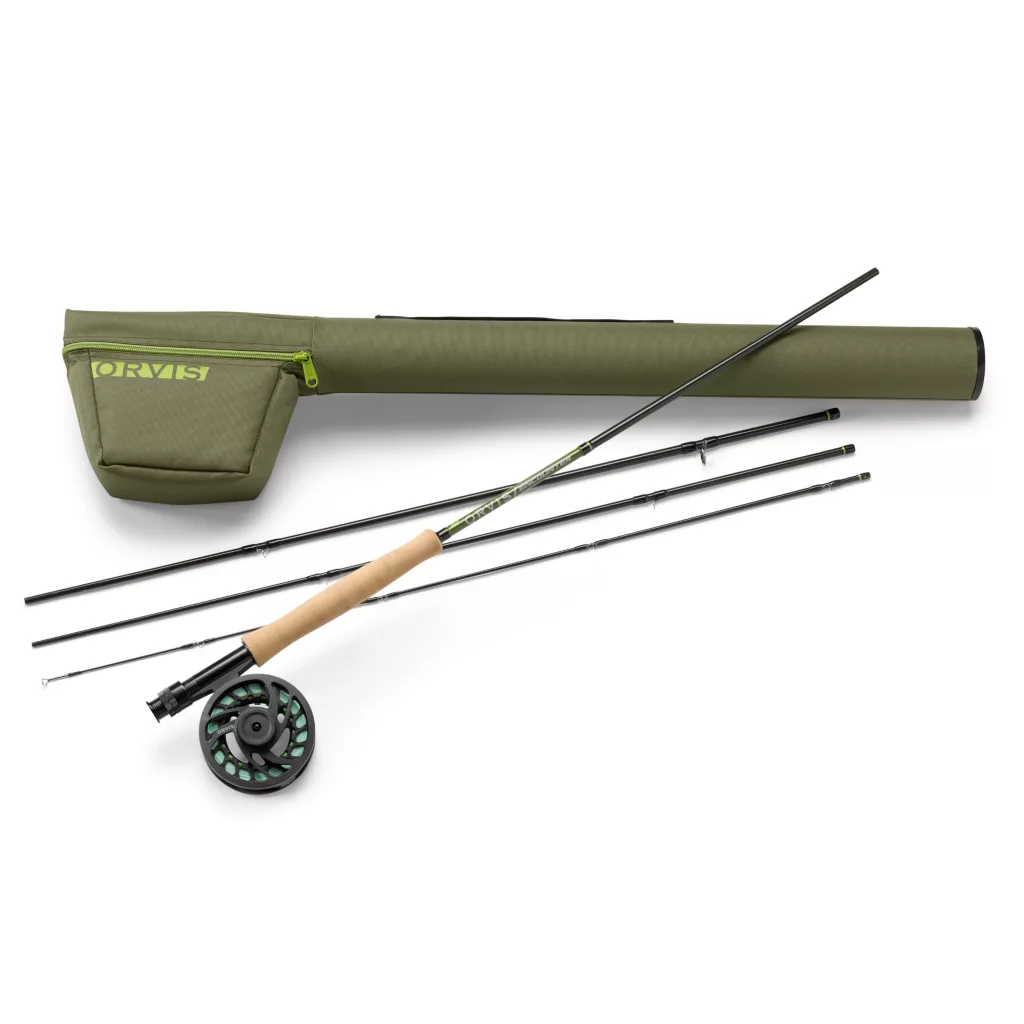Rod/Reel
A comfortable light weight rod/reel set up is best for most beginners. It’s helpful to have it ready to go out of the box. Rigging a new reel with nothing on it can be daunting. You will get there but at first it is just easier to get a pre-rigged one. Buying a pre-rigged set up also means that your rod will likely match the right fly line. All you will need to do is tie the fly on.
Orvis has two classic beginner set ups: The Encounter or their Clearwater model.
Redington’s Crosswater is another great starter kit.


The advantage of these sets are they are pre-rigged and will have matched rod, reel, and line. They are also medium action and lightweight models that will be both easy to practice and use. They have easy to adjust drag systems. Some models have rod and/or reel tubes to keep them protected.
They will also be able to be used in a variety weather/water conditions and species of fish. Finally, today’s technologies mean that with the proper maintenance (cleaning) they will last a long time.
Flies
There are so many different types of flies depending on the species you are targeting. There are some basic fly kits you can buy online for both fresh and saltwater. These aren’t bad investments as you will probably use all of them at some point.
Think where you will be fishing – the time of year, the type of water, and the species of fish you will encounter or target. Research what’s working in the local waters.
I think one of the best things you can do, when you’ve gotten yourself a bit educated is to reach out to a local fly shop in the area where you will be fishing. They are always willing and happy to help. They can also sell you a fly or two that has been doing extremely well.
Other Basic Gear
A lot of gear has been developed for the fly-fishing market. However, you won’t need it all when you are starting out and if you are not careful, you could soon find yourself bogged down, wasting money on equipment you will never use. Keep things simple and have the following:
Basics necessities include:
- Fishing pliers or hook remover for removing flies from your catch
- Clippers, for cutting lines
- A few leaders and tippets– selection dependent on species and conditions
- A leader straightener
- With certain species, a fly-fishing net, which not only makes it easier for you to grab the fish, but protects your catch from harm and stress
- Lastly – anything the local Fish and Wildlife Resources Department requires – license and maybe a specific type of tool
Clothes
Clothes, like the flies, are highly dependent on where and when you will be fishing. Fishing for trout in a cold stream is completely different than wading the flats in Florida.
I’ll address some specific water and weather condition needs in another post but for now – the main thing you need is proper sun cover (high UPF 40 above), favorite hat, and a pair of decent sunglasses. I could write an entire blog simply on the sunglass aspect as there are so many models – but for now – just get a decent pair of polarized glasses.
Last and most important thing you need
Practice, practice, practice. Make the time for it.
